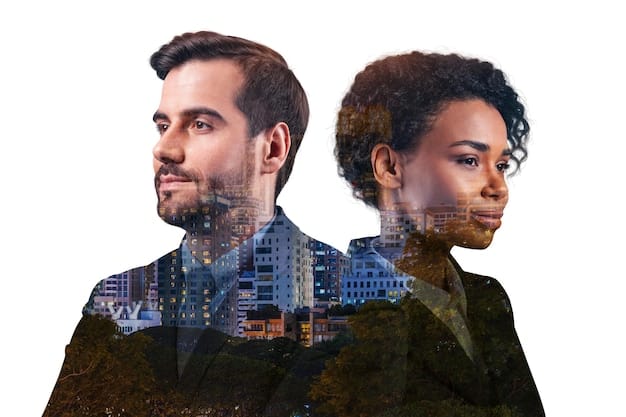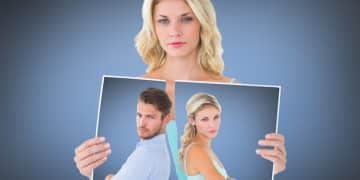Instagram’s Body Image Policy: Can It Curb Unrealistic Beauty Standards?

Instagram’s new policy on body image aims to reduce the spread of unrealistic beauty standards in the US by regulating filters and editing tools that promote altered appearances.
Instagram’s New Policy on Body Image: Will It Stop the Spread of Unrealistic Beauty Standards in the US? This is the question on many minds as the social media giant rolls out new guidelines aimed at curbing the proliferation of altered images and promoting a more realistic portrayal of beauty.
Understanding Instagram’s New Body Image Policy
Instagram has recently introduced a new policy focused on body image, addressing the growing concerns about the impact of social media on mental health and self-esteem. This policy aims to regulate the use of filters and editing tools that can create unrealistic or unattainable beauty standards.
The new measures are designed to protect users, particularly young people, from the negative effects of heavily altered images and videos. By setting guidelines on what kind of content is acceptable, Instagram hopes to promote a more positive and realistic environment.
Key Components of the Policy
The policy includes several key components aimed at reducing harmful content:
- Restrictions on Filters: Limitations on filters that drastically alter facial features or body shapes.
- Transparency Requirements: Mandating disclosure when images have been significantly edited or manipulated.
- Promoting Body Positivity: Supporting content that celebrates diverse body types and promotes self-acceptance.
These measures are designed to create a safer and more inclusive online space, where users feel less pressure to conform to unrealistic ideals.

The impact of these changes remains to be seen, but the intention is clear: to foster a healthier relationship with body image among Instagram users.
The Impact of Unrealistic Beauty Standards in the US
The prevalence of unrealistic beauty standards in the US has led to widespread mental health issues, particularly among young adults. Social media platforms like Instagram have often been criticized for exacerbating these problems by showcasing heavily filtered and edited images.
These unrealistic standards can lead to feelings of inadequacy, anxiety, and depression. Many individuals, influenced by what they see online, develop unhealthy behaviors in an attempt to achieve these unattainable ideals.
Mental Health Consequences
The mental health consequences of chasing unrealistic beauty standards are significant:
- Increased Anxiety: Constant exposure to perfect images can trigger anxiety and self-doubt.
- Depression: Feelings of inadequacy can lead to depressive symptoms and a decline in overall well-being.
- Eating Disorders: The pressure to conform to specific body types can contribute to the development of eating disorders.
Addressing these issues requires a multifaceted approach, including policy changes on social media platforms and increased awareness about the impact of unrealistic standards.
Instagram’s new policy is a step in the right direction, but it is only one piece of the puzzle. A broader cultural shift is needed to truly combat the harmful effects of unrealistic beauty standards.
How the Policy Aims to Promote Realistic Beauty
Instagram’s new policy aims to promote realistic beauty by limiting the use of filters and editing tools that drastically alter appearances. The goal is to encourage users to embrace their natural features and bodies rather than striving for an artificial ideal.
By setting guidelines on acceptable content, Instagram hopes to change the narrative around beauty and self-image. This includes promoting body positivity and celebrating diversity.
Steps to Encourage Realism
Instagram plans to take several steps to encourage realistic beauty:
- Monitoring Content: Actively monitoring and removing content that violates the policy guidelines.
- Partnering with Experts: Collaborating with mental health professionals and body positivity advocates to develop effective strategies.
- User Education: Educating users about the impact of filters and editing tools on self-perception.
These steps are aimed at creating a more authentic and supportive online environment where users feel empowered to be themselves.
The success of this policy will depend on consistent enforcement and ongoing efforts to promote a healthy body image.
Challenges in Implementing the New Policy
Implementing Instagram’s new policy on body image presents several challenges. One of the main obstacles is the difficulty in accurately identifying and regulating content that violates the guidelines. With millions of posts uploaded daily, monitoring every image and video is a daunting task.
Another challenge is the potential for users to find loopholes or use alternative editing apps to circumvent the policy. This requires constant vigilance and adaptation.
Potential Obstacles
Several potential obstacles could hinder the effectiveness of the policy:
- Enforcement Difficulties: The sheer volume of content makes it challenging to enforce the policy consistently.
- User Circumvention: Users may find ways to bypass the policy using alternative apps or techniques.
- Cultural Resistance: Some users may resist the policy, viewing it as an infringement on their freedom of expression.
To overcome these challenges, Instagram will need to invest in advanced technology and work closely with the user community to foster compliance.

Education and awareness campaigns are crucial to help users understand the importance of promoting realistic beauty standards.
Expert Opinions on Instagram’s Policy
Experts in mental health and media studies have offered mixed reactions to Instagram’s new policy on body image. While many applaud the effort to promote realistic beauty standards, some remain skeptical about the policy’s long-term effectiveness.
Some experts argue that the policy doesn’t go far enough, calling for more stringent regulations and greater transparency. Others believe that it is a positive step but emphasize the need for ongoing evaluation and adaptation.
Differing Perspectives
Here is a summary of differing expert perspectives:
- Positive View: The policy is a necessary first step in addressing the harmful effects of unrealistic beauty standards.
- Critical View: The policy needs to be more comprehensive and rigorously enforced to be truly effective.
- Balanced View: The policy is a good start, but ongoing efforts and adjustments are essential for long-term success.
The consensus is that Instagram’s policy is a welcome development, but its ultimate impact will depend on how well it is implemented and sustained.
Collaboration between social media platforms, mental health professionals, and the user community is essential to create a healthier online environment.
Alternative Approaches to Promoting Body Positivity
In addition to Instagram’s policy, there are various alternative approaches to promoting body positivity and realistic beauty standards. These include educational campaigns, community initiatives, and advocacy efforts.
Educational programs can help individuals develop a healthier relationship with their bodies and challenge unrealistic beauty ideals. Community initiatives, such as support groups and workshops, provide a safe space for sharing experiences and building self-esteem.
Effective Strategies
Here are some effective strategies for promoting body positivity:
- Media Literacy Education: Teaching individuals how to critically analyze media messages and recognize unrealistic beauty standards.
- Community Support Groups: Creating safe spaces for individuals to share their experiences and build self-esteem.
- Advocacy Campaigns: Raising awareness about the harmful effects of unrealistic beauty standards and advocating for policy changes.
By combining these approaches with policy changes on social media platforms, we can create a more positive and inclusive culture that celebrates diversity and promotes self-acceptance.
Empowering individuals to embrace their unique qualities is key to fostering a healthier society.
| Key Point | Brief Description |
|---|---|
| 📸 New Policy | Instagram implements rules on filters & editing. |
| 💔 Mental Health | Unrealistic standards cause anxiety & depression. |
| 👍 Promoting Realism | Encouraging users to embrace natural features. |
| 🛡️ Challenges | Enforcement & user circumvention are key hurdles. |
Frequently Asked Questions
▼
The primary goal is to mitigate the negative impact of unrealistic beauty standards promoted by heavily filtered and edited images, particularly among young users.
▼
By restricting filters that drastically alter facial features and requiring transparency for significantly edited images, Instagram hopes to encourage authenticity.
▼
Challenges include consistently enforcing the policy across vast content, users circumventing it via external apps, and cultural resistance to these new rules.
▼
Mental health professionals and body positivity advocates are partnering with Instagram to provide expertise and guidance, ensuring the policy is effective and supportive.
▼
Yes, media literacy education, community support groups, and advocacy campaigns are also crucial for fostering a healthier relationship with body image beyond social media platforms.
Conclusion
Instagram’s new body image policy is a commendable effort to tackle the harmful effects of unrealistic beauty standards in the US. While challenges remain in its implementation and enforcement, the policy represents a significant step towards fostering a more positive and authentic online environment.





